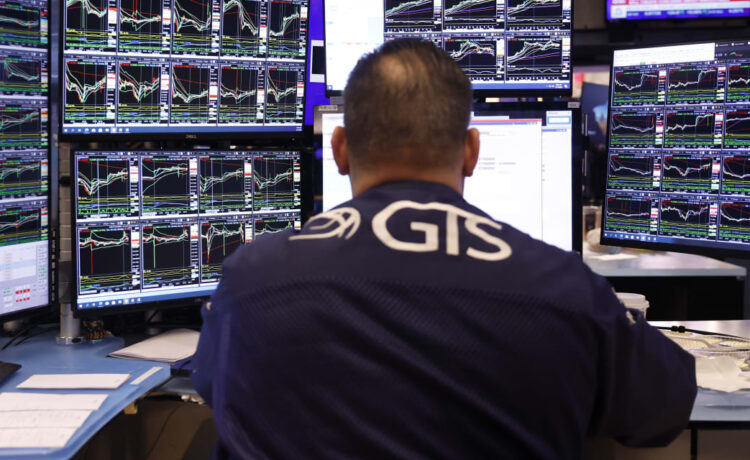Stocks are heading higher once again on Thursday, as
Nvidia
’s
results powered a fresh wave of tech optimism, and with the
up more than 4% in 2024, rally skeptics are hard to find. Still J.P. Morgan warns that investors shouldn’t assume the bulls will always be in charge.
“Optimism now is quite high and some describe the current regime as ‘parabolic stock markets’ and ‘platinum-locks’ (an even more desirable version of goldilocks),” writes the firm’s Chief Market Strategist Marko Kolanovic. Nonetheless he finds “current markets developments odd.”
Take for example the fact that although the U.K., Japan, and Germany being in a technical recession, European and Japan stock markets are notching record highs. That mirrors their U.S. counterparts, which appear to already be pricing in “far-fetched applications of artificial intelligence,” he notes.
That said, it wouldn’t be the first time that a recession and equity gains exist simultaneously, Kolanovic believes there are other risk factors that have yet to play out.
His big concern is that the market might not get the interest-rate cuts it hopes from the Federal Reserve, given that the central bank’s quest to lower inflation is constantly undermined by factors such as high government spending and stock gains.
Or has Kolanovic puts it: “Can one get inflation under control with stock and crypto markets adding trillions of paper wealth, and tightening aspects of quantitative tightening neutralized by treasury issuance? For instance, just one tech company’s recent gains added the equivalent of the market capitalization of the bottom 100 companies in the S&P 500, and the size of the crypto market doubled since last fall.”
Advertisement – Scroll to Continue
Indeed, a significant portion of the fourth-quarter rally was driven by hopes of rate cuts, and although investors have since dialed back their expectations, the stock market hasn’t pulled back. That means there could be plenty of disappointment should any cracks show in the platinum-locks scenario, which could be as painful as recent gains have been plentiful. “While momentum strategies most of times make money, reversion points can erase years or performance in short periods of time,” he writes.
His belief is that the soft landing narrative is in jeopardy of giving way to something much less desirable, like 1970s style stagflation. Although plenty of market strategists have said we’re once again in the roaring 20s, Kolanovic notes that there are just as many parallels between now and the stagnant 70s, from government deficit spending to active wars in the Middle East that threaten shipping and energy markets.
If these disruptions come home to roost, he thinks investors will seek out safety, much as they did in the 70s, a decade when equities were largely flat and bonds easily outperformed.
Advertisement – Scroll to Continue
Other skeptics are also concerned about the market’s latest leg up. Rosenberg Research founder and President David Rosenberg writes that while he doesn’t have a bone to pick with Nvidia’s results, which are fueling stocks’ climb on Thursday, they mean that “AI mania [is] likely to continue.”
While the Magnificent Seven account for more than a quarter of the S&P 500, the Nvidia rally is actually not great for the rest of the stocks in the index, he argues.
“Valuations will likely also get pushed to even further extremes in what has already been a multiple-driven expansion that is outpacing the fundamentals…we can’t help but notice how the earnings picture for the rest of the S&P 500 has been disappointing,” Rosenberg wrote.
By contrast, he thinks that Japan’s record—the
Advertisement – Scroll to Continue
finally surpassed its 1989 high on Wednesday—looks much more sustainable than the S&P 500 rally, given that the Japan rally has been fueled by strong earnings, and investor-friendly regulatory changes.
Of course voices of caution remain outliers, as most strategists are more willing to take the rally at face value. According to FactSet, the median S&P 500 target among Wall Street firms has climbed nearly 8% since the end of 2023, and now stands at 5,522.40, implying gains just under 11%.
Interestingly that’s come as full-year earnings-per-share estimates for the index have edged lower, to $241.75 from $243.33 at the end of December, and they could continue to fall. Bulls, however, note that even a result as low as $235 represents nearly 50% gains from the prepandemic period, and that valuations aren’t overstretched.
That optimism is in full force Thursday. Still, if history does repeat itself, it’s worth remembering there’s more than one decade this one could emulate.
Write to Teresa Rivas at teresa.rivas@barrons.com

















